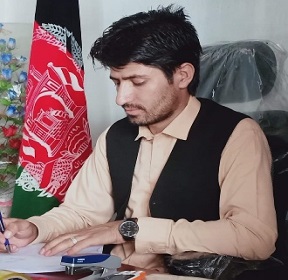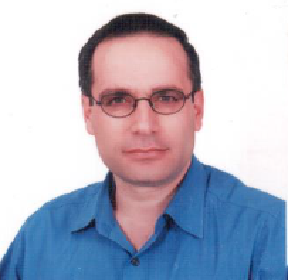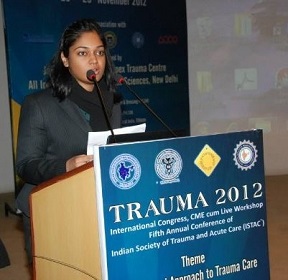Speakers
Ahmad shah Baghlani
AfghanistanTitle: CONGESTIVE HEART FAILURE
Abstract:
Heart failure describes the clinical syndrome that develops when the heart cannot maintain an adequate cardiac output. Causes of heart failure are The most common causes of heart failure are coronary heart disease, hypertension, alcohol abuse, and idiopathic dilated cardiomyopathy Other causes are valvular and pericardial disease; or non-cardiac diseases causing high-output cardiac failure, such as anaemia, thyrotoxicosis, septicaemia, Paget's disease of bone, and arteriovenous fistulae. The heart depends on a number of adaptive mechanisms for maintenance of its pumping function is the Frank Starling mechanism (cardiac dilatation), Myocardial hypertrophy and Increased release of catecholamines, activation of renin-angiotensin-aldosterone system and other neurohumoral adjustments. Pathophysiological changes in heart failure i.e. Ventricular dilatation Myocyte hypertrophy & Increased collagen synthesis. Clinical syndromes of heart failure are the Left ventricular systolic dysfunction (LVSD) is commonly caused by ischaemic heart disease but can also occur with valvular heart disease and hypertension and Right ventricular systolic dysfunction (RVSD) may be secondary to chronic LVSD but can occur with primary and secondary pulmonary hypertension, and right ventricular infarction. Clinical features are right heart failure and Frequently secondary to left heart failure left heart failure are Causes-ischaemic heart disease & Systemic HTN. Drugs used in the management of heart failure i.e.Angiotensin-converting enzyme (ACE) inhibitors, Angiotensin II receptor blockers,Beta-blockers, Other vasodilators ( nitroglycerin), Cardiac glycosides (digoxin), Aldosterone receptor blockers, (spironolactone), Loop diuretics. Cardiac glycosides are Include: ouabain and digitalis glycosides (digoxin and digitoxin), Digitalis glycosides have been used for many years in patients with heart failure and atrial fibrillation and Cardiac glycosides act as positive inotropes by competitive inhibition of Na+/K+-ATPase, producing high levels of intracellular sodium. This is then exchanged for extracellular calcium. High levels of intracellular calcium result in increased myocardial contractility.They also improves baroreceptor responsiveness, and reduces sympathetic activity and circulating renin.
Biography:
Ahmad shah Baghlani is medical doctor (MD) by profession and works with one of the private hospitals and lecturer in private institute of medical science in Afghanistan. He holds an MD in medical, Ahmad shah has 2 years of private practices as a general physician (Doctor). He has also been involved in outbreak investigations of EPI in Afghanistan.
Samer AKL
SyriaTitle: Opening pulmonary valve in patients of heart failure
Abstract:
Pulmonary valve is the most dangerous _ the first killer in the world ,and the heart of 3 valves is better than that of 4 valves. Opening it by a stent or by a sond, gives great benefit for 2 types of patients ; TYPE 1;congestive heart failure[DCM]& TYPE II; Systemic arterial hypertension [HTN] Opening it by a stent or by a sond, gives indirect benefit for other types of patients. The new procedure is a new sond like PM sond designed to leave the PV always opened, it is a reversible procedure [if there is deterioration in the RV function , the sond is easily withdraw]. Scientific facts are we have to accept that pulmonary insufficiency[PI] is goodly tolerated for many decades , in pure congenital pulmonary stenosis,the best approach is balloon percutaneous intervention with excellent results,[that means PI is symptomatic],and no need in future for pulmonary val replacement[PVR].the only need for PVR is post Tetralogy of Fallot in only 10% after 20years,knowing that there is hypoplasic in RV outlet and pulmonary arteries and sometimes the need to do blalock[central shunt ],and to put a patch to widen the outlet ,and almost all the operations of PVR are done for pts of patchs, and those with preserved annulus and valvectomy do not need PVR ,that means the cause of right heart failure is iatrogenic and I think the operation PVR is not valid and malevaluated,I think it is avery particular case, and I shell exclude it
Notice; it is impossible for the lone PI to cause right heart failure.
The idea of the protocol is the Heart failure is the pathophysiology state in which the heart is unable to pump blood at a rate commensurate with the requirement of the metabolizing tissues,
Biography:
Samer AKL is medical doctor (MD) by profession and works with one of the private hospitals and lecturer in private institute of medical science in Syria. He holds an MD in medical, He has 2 years of private practices as a general physician (Doctor). He has also been involved in outbreak investigations of EPI in Syria.
Title: Camel milk; A superfood for diabetes and its complications
Abstract:
There are various anti-diabetic drugs to treat diabetes but they have several negative effects on the patients’ health. Although the proper treatment of diabetes includes insulin injection continuously to maintain blood glucose level, but nowadays, the researchers following some natural alternative healings for insulin. Camel milk contains insulin like proteins, which does not form coagulum in the acidic condition of stomach, can be absorbed from the intestine and may be an effective alternative for insulin to treat type 1 and 2 and gestational diabetes. Camel milk is believed to be a suitable hypoglycaemic agent in improving long-term glycaemic control in experimental animals and patients with diabetes. The incidence risk of diabetes in people who regularly consume camel milk, is much lower than those who don’t use camel milk. Camel milk may prepare about 60% of the insulin in diabetic patients and reduce blood sugar and required insulin dose about 30–35% in type 1 diabetes patients. Raw camel milk has immune- modulatory effects on beta-cells of the pancreas, increase insulin secretion, reduces required insulin and insulin resistance and improves the glycaemic control in type 1 diabetes patients. Camel milk improves the diabetes complications such as obesity, inflammation, wounds and oxidative stress damages. The anti-oxidative activity of camel milk whey proteins enhances the proliferation of immune cells and accelerates the wound healing process during diabetes. Also, camel milk can prevent liver and kidney failures derived from diabetes mellitus and improving lipid profiles in diabetes patients. Lactoferrin of camel milk has immune- modulatory effects on pancreas beta-cells and reduces required insulin doses in diabetes 1 and 2 patients. Obviously, camel milk effects on regulating of blood glucose are including; effect on insulin receptor function, signalling and glucose transport in the insulin-sensitive tissues, effect on the growth and activity of the pancreatic beta-cells in insulin secretion and negative modulation on the glucagon receptor. In most of the clinical trials, the favourable effects of raw camel milk on diabetes mellitus observed by the recommended dose 500 mL/day for 3 months which also improve risk factors such as liver and kidney failures and cardiovascular challenge derived from diabetes mellitus. It appears that more scientific studies are needed to confirm the effectiveness of processed and camel milk powder on diabetes cases.
Biography:
She finished her phD in Iran and has been as a researcher at Queensland University, Australia; she has attended and presented her works in different conferences in some countries. She is working as a full professor since 13 years ago in Agricultural Sciences and Natural Resources University, Iran. She has been as supervisor for 11 phD students and more than 25 Msc students and also guided more than 45 Msc and phd thesis. She has over 200 published publications, conferences presentations, and scientific projects; many presentations in international workshops and webinars, also 6 translated books on phytochemicals and microbes, probiotics and bioactive components in the livestock milk; one book on milk lactoferrin as antimicrobial agent and one on anti-diabetes properties of camel milk are under publishing. She is member of the editorial board and reviewer of some international and national Journals.
Shruti Dabi
IndiaTitle: Comparative evaluation of role of Oro-t mouthwash and Smf mouthwash as adjunct to scaling (subgingival irrigation): A randomized clinico-comparative study”
Abstract:
INTRODUCTION:
Treatment of periodontal disease is routinely based on mechanical debridement of the tooth surface and appropriate and meticulous maintenance of oral hygiene. However, comprehensive mechanical debridement of sites with deep periodontal pockets is difficult to accomplish, therefore systemic or local administration of antibiotics are preferred. But there are various disadvantages with systemic therapy like hypersensitivity reaction, organ toxicity and bacterial resistance. So, to attained the correct required GCF concentration at the target site, led to the use of local drug-delivery system. Ayurveda system of medicine has its root in Indian subcontinent which is being globalized and practices as alternative medicine in the Western world. It is typically based on complex herbal compounds, minerals, and metal substances. Further SMF mouthwash has been used for treating OSMF patient because of its contents which enhanced its properties by improving healing capacity of the tissue. So, in this present study we have planned to evaluate & compare healing potential of both the mouthwashes which is better.
AIM
Comparative Evaluation of Subgingival irrigation Role Of ORO-T Mouthwash and SMF Mouthwash as adjunct to scaling. A clinical comparative study.
OBJECTIVE
- To evaluate effect of subgingival irrigation ORO-T mouthwash as an adjunct to scaling & root planning (SRP).
- To evaluate effect of subgingival irrigation SMF mouthwash as an adjunct to scaling & root planning (SRP).
- To compare & evaluate effect of subgingival irrigation ORO-T mouthwash & SMF mouthwash as an adjunct to scaling & root planning (SRP).
MATERIALS
Piezo- electric scalers, Oro-t mouthwash, SMF mouthwash,5 ml syringe with blunt cannula. TYPE OF STUDY- A Randomized Clinico-Comparative Split Mouth Study. SAMPLE SIZE- Split mouth study in 30 patients with 120 experimental sites with inclusion criteria involving like Systemically healthy patients, Periodontal pocket depths ranging from ≥5 mm to ≤ 7mm, Requiring Non- surgical periodontal treatment and exclusion criteria involving like patients taking antibiotics for past 6 months, Smokers /Gatka or any form of smokeless tobacco users, Periodontal therapy within past 6 months, Bony defect requiring surgical regenerative treatment and Mobility.
Clinical parameters Plaque Index, Gingival Index, Bleeding Index, probing depth, Clinical attachment level were recorded at baseline, at day 14 & day 21 & were evaluated for both Oro
-t mouthwash &SMF mouthwash group after giving subgingivally as a local drug delivery as an adjunct to scaling & root planing.
RESULT
Statistically significant reduction was seen for all the parameters in both the groups when compared with baseline parameters but there was no statistically significant difference between Oro-t mouthwash & SMF mouthwash.
CONCLUSION
Although there was no statistically significant difference between Oro-t mouthwash & SMF mouthwash in all the parameter’s reduction yet SMF mouthwash can be used as a local drug delivery in replacement of antibiotics (tetracycline fibers) because of its superior properties when compared with turmeric mouthwash. Further researches need to be done.
KEY WORDS-Oral Submucous fibrosis, Clinical attachment level, Oro-T mouthwash, Local drug delivery.
Biography:
Shruti Dabi completed her master in dental surgery in the year Aug, 2021 from Rajasthan University of health science, Jaipur (Raj.). Presently she is practicing her field of specialty in my private clinic held in Ajmer (Raj.) India with my dad’s named as Dr. Vikram Singh Dabi. She has published 2 original research in international PubMed journals & 1 book in international journal, others are under process. Presently she is working with 4 different journals, as an Editor in 2 international journals [1 dental (PubMed journal) & 1medical (Scopus journal)] & as a Reviewer in 2 international dental journals (Scopus, publons).
Aparajita Kumar
IndiaTitle: SUCCESSFUL THROMBOLYSIS BY LOW DOSE SLOW INTRAVENOUS ALTEPLASE INFUSION IN CRITICALLY ILL PATIENTS WITH STUCK PROSTHETIC MITRAL VALVE:A CASE STUDY
Abstract:
Prosthetic valve thrombosis(PVT) contributes to significant post valve replacement mortality and morbidity.Treatment guidelines are controversial,ranging from surgical intervention to thrombolysis.We report a case study of two challenging patients who presented in our hospital,known Rheumatic Heart Disease,Post Mitral Valve Replacement,with Acute Left ventricular failure in NYHA class IV and PVT,of which one had coagulopathy with grossly deranged INR.Both patients were put on intermittent non invasive ventilator and inotropic supports,and successfully thrombolysed with low dose slow intravenous Alteplase infusion given every 6 hours in discrete doses with monitoring of PT/INR and mitral valve gradients,resulting in remarkable clinical improvement .Their successful treatment shows that thrombolysis can be considered as an effective treatment modality in high risk surgery patients with stuck prosthetic mitral valve.
Biography:
Aparajita Kumar has completed Diploma Cardiology in 2015 from MS Ramaiah Narayana Hrudalaya, Bangalore,,and is an International Associate, American College of Cardiology.She has over 7 years experience in Cardiology having previouly worked in leading corporate hospitals,,and is presently working as Consultant Cardiology-Non interventional in Max Hospital Dehradun, India.She has attended several national and international conferences,and has been a presenter in International Trauma Conference.She had been awarded Second prize in National Young Genie Champion in Cardiology in 2016.She has a keen interest in research,and completed Research to Publication course by UCMS California and BMJ for designing clinical trials and scientific writing,and was awarded 200 CPD credits for the same.Her key interests are Preventive cardiology, echocardiography and hypertension





